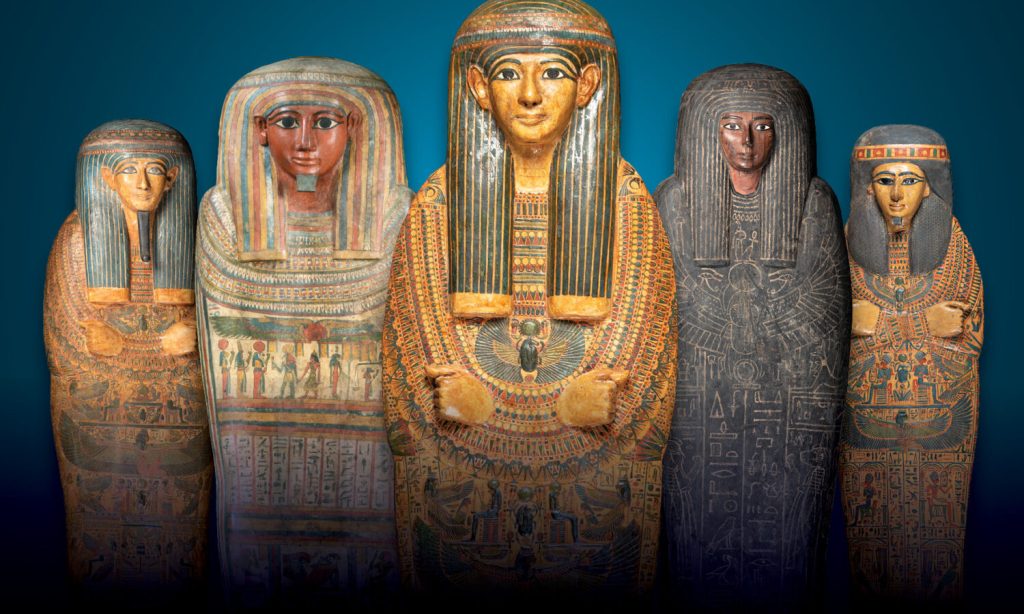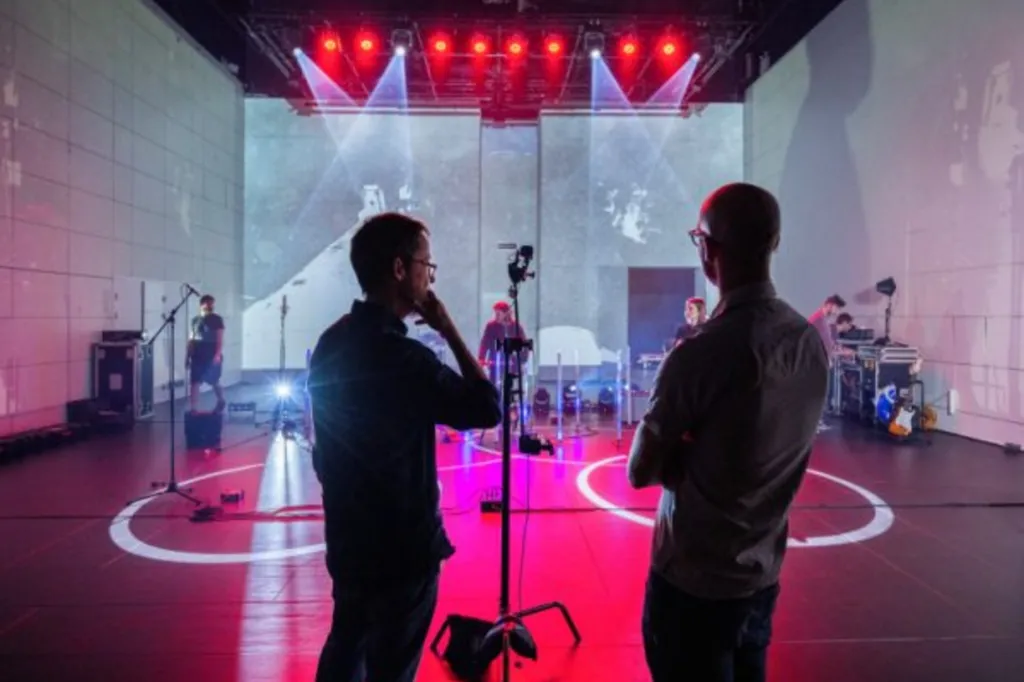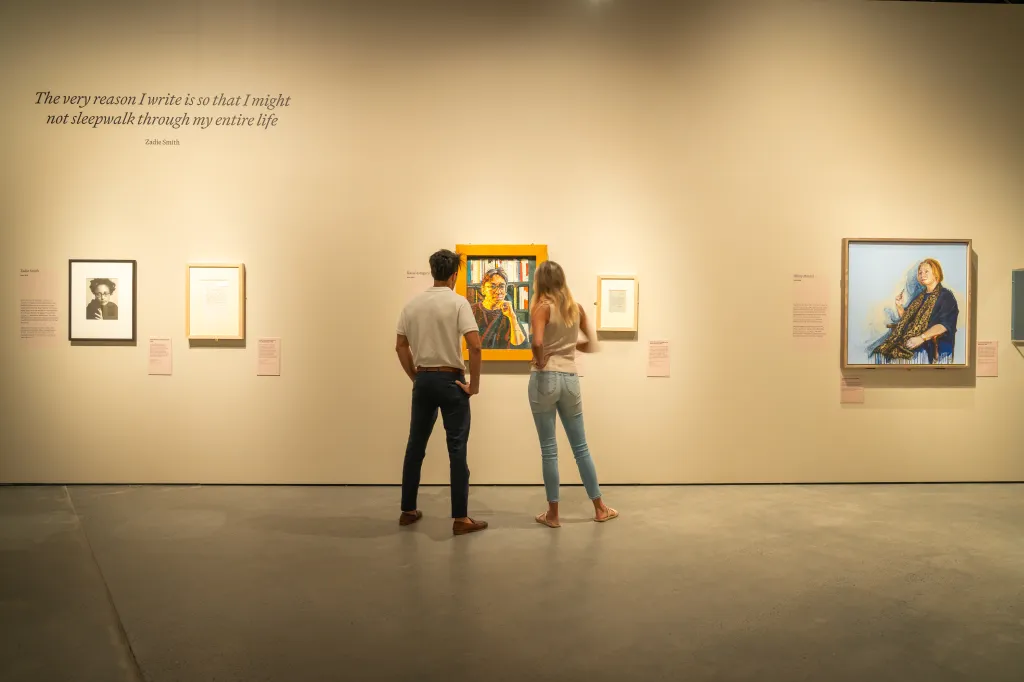Mummies, dearest, and other wonders of Ancient Egypt
A new exhibition at the Queensland Museum is a deep dive into the mesmerising and complex history of Ancient Egypt.

Wandering through the exhibition Discovering Ancient Egypt with Dr Toon Sykora I’m surprised that he seems as excited as I am.
Dr Sykora is curator of Egypt and Nubia collections from the Dutch National Museum of Antiquities (Rijksmuseum van Oudheden or RMO) at Leiden in the Netherlands. He’s an archaeologist and Egyptologist and was in Brisbane to bed down this incredible exhibition from the RMO, which is showing at the Queensland Museum until August next year.
Dr Sykora has seen the incredible array of antiquities on display many times but has obviously never lost his sense of wonder. And that’s a bit infectious. “Why are we so fascinated with Ancient Egypt?” I ask.
“Well, one reason is because there is just so much well-preserved material about Ancient Egypt,” he says. “That makes it possible to tell stories about Egypt and its people. Some cultures don’t leave much for us to go on. But Egypt is a desert country and that has helped with preservation. Even organic materials are reasonably well preserved.
“Also, there is plenty of iconography. What they have left behind is often beautiful and quite distinct. You immediately recognise things as being Egyptian.”
Dr Sykora spends time each year in Egypt on an archaeological dig.
You might like
“I’ve been excavating in Egypt since 2014,” he says. “I’m very fortunate and I’m aware of that.”
This exhibition has been touring for a few years and has been to Japan and South Korea and was on display in Perth and Canberra before Brisbane. It features more than 250 objects dating from 3700 BCE (Before the Common Era) to the 15th century CE (Common Era) showcasing Egyptian rituals, their belief in an eternal afterlife and the enduring evolution of their culture over millennia.
The treasures on display give visitors the opportunity to explore artistic creativity, daily life, writing, religious beliefs and burial customs of ancient Egypt, while an ancient board game, fine jewellery and private letters reveal intimate aspects of everyday life.
Featured in the exhibition is the first sheet of a papyrus scroll taken by the priest Padikhonsu to secure his journey to the afterlife; a necklace with a centrepiece depicting the head of a ram, a symbol for Amun “the king of gods”; and the intricately decorated outer coffin of the priest Panesy, which is adorned on each side with depictions of the sons of Horus.
Queensland Museum CEO Dr Jim Thompson says Discovering Ancient Egypt is a highlight of the museum’s calendar.
“This exhibition promises to captivate and inspire visitors of all ages with its breathtaking art, exquisite sculptures and intricately detailed funerary artefacts,” Dr Thompson says. “Each artefact reveals a fascinating story of ancient innovation, artistry and cultural significance, offering a rare glimpse into a civilisation that continues to influence our understanding of the world. We look forward to showcasing this amazing collection and providing Australians with a final chance to enjoy the exhibition before it heads back to the Netherlands.”
Subscribe for updates
I begin my tour with Dr Sykora referencing a replica of the façade of the 2000-year-old Temple of Taffeh from the village of Taffeh in Nubia, which dates from the reign of the Roman Emperor Augustus. That’s a relatively recent piece considering how ancient other pieces are, with some dating back four millennia.
As we move through the exhibition, I marvel over an array of items including a tiny flute several thousand years old. The coffins or sarcophagi of various individuals are amazing and they are displayed in one room, which then leads to another where various mummies are laid out.
There are five mummified human bodies: the woman Ta(net)kharu or Tadis; the young girl Sensaos; the man Harerem; an unknown male and an unknown female. Visitors have the option to bypass this gallery (some might be spooked) containing the mortal remains of people who lived thousands of years ago. It’s not necessarily spooky, but it does make one reflect.
Visitors can peel back the layers of history through recent CT scans conducted on the mummified human and animal remains (there are mummies of animals elsewhere) with the results of the analysis being made public in Australia for the first time.
There are colourful papyrus sheets of the Egyptian Book of the Dead and a group of beautifully carved statues from the Saqqara necropolis. And there is some gorgeous jewellery.
The aesthetic of Ancient Egypt is part of the allure. Everything seems beautiful. I couldn’t help thinking about that famous exchange between Lord Carnarvon and the English archaeologist Howard Carter when Carter first looked into the newly discovered Tutankhamen’s tomb.
“Can you see anything?” Lord Carnarvon asked.
“Yes, wonderful things!” Carter replied.
And that’s what you will see at this exhibition. Wonderful things.
Discovering Ancient Egypt continues at the Queensland Museum, South Brisbane, until August, 2025.
museum.qld.gov.au

